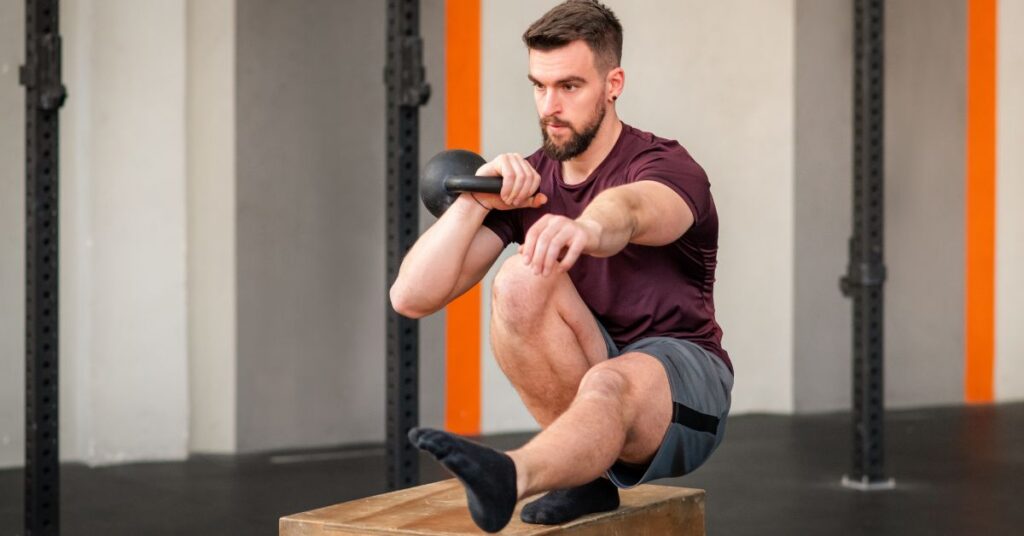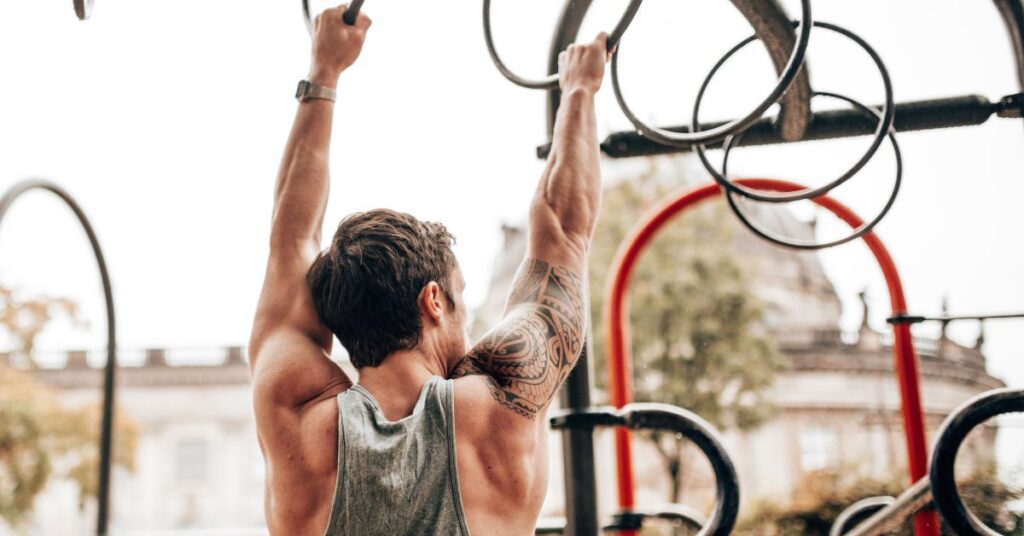Calisthenics abs workouts are a great way to strengthen your core and improve overall body strength using only your body weight. You can tailor calisthenics abs exercises to your current fitness level, from beginner to advanced. 10 Calisthenics Abs Workouts for building core strength include Plank for stability, Leg Raises for lower abs, Crunches for upper abs, Bicycle Crunch for obliques, Sit-ups and V-ups for full abs, and Ab Rollouts for advanced core control.
Calisthenics abs workout have become increasingly popular among fitness enthusiasts looking to build core strength without the need for heavy equipment. By focusing on bodyweight exercises, these workouts not only enhance physical appearance but also improve overall functional fitness. This comprehensive service page will explore the fundamentals of natural abdominal exercises and training sessions, the key muscle groups involved, effective exercise routines for various skill levels, and essential tips for maximizing results.
Table of Contents
9 Calisthenics Abs Workout
Strengthen your core with these ten powerful calisthenics exercises that require no equipment. This comprehensive abs workout targets all areas of your abdominal muscles, from deep stabilizers to surface muscles. Perfect for building functional strength, improving posture, and developing a rock-solid midsection through bodyweight movements alone.
Combine training with nutrition: intermittent fasting plan that supports fat loss and muscle retention
Exercise Overview
| # | Exercise | Primary Target | Difficulty Level | Duration/Reps |
|---|---|---|---|---|
| 1 | Plank | Core Stability | Beginner | 30-60 seconds |
| 2 | Leg Raises | Lower Abs | Intermediate | 10-15 reps |
| 3 | Bicycle Crunch | Obliques | Beginner | 20-30 reps |
| 4 | Crunch | Upper Abs | Beginner | 15-25 reps |
| 5 | Dead Bug | Deep Core | Beginner | 10-12 each side |
| 6 | Sit-up | Full Abs | Intermediate | 15-20 reps |
| 7 | V-up | Full Core | Advanced | 10-15 reps |
| 8 | Static Bent Knee Hold | Lower Abs | Intermediate | 20-30 seconds |
| 9 | Ab Rollouts | Full Core | Advanced | 8-12 reps |
Calisthenics Abs Workout Exercise Descriptions
Each exercise below includes detailed instructions to maximize effectiveness and prevent injury. These movements are arranged progressively, allowing you to build strength systematically. Focus on proper form over repetition count, maintaining controlled movements throughout each exercise. Quality execution ensures optimal muscle activation and long-term progress.
1.Plank
The plank is the foundation of core strength, engaging your entire midsection while teaching proper spinal alignment. This isometric exercise builds endurance in your deep stabilizing muscles, improves posture, and creates a solid base for all other core movements. Master this before progressing to advanced variations.
2. Leg Raises
Leg raises specifically target your lower abdominal muscles, an area often neglected in traditional ab workouts. This exercise strengthens hip flexors while building incredible lower ab definition. The controlled movement pattern teaches you to engage your core while moving your limbs, improving functional strength significantly.
3. Bicycle Crunch
The bicycle crunch is a dynamic exercise that targets your obliques and rectus abdominis simultaneously. This rotational movement mimics real-world activities while building core strength and coordination. The alternating pattern challenges your brain-muscle connection, making it excellent for athletic performance and everyday functional movement patterns.
4. Crunch
The classic crunch remains one of the most effective exercises for targeting the upper portion of your rectus abdominis. This controlled movement focuses on spinal flexion, building strength and definition in your “six-pack” muscles. Proper form emphasizes quality over quantity for maximum muscle activation.
5. Dead Bug
The dead bug exercise teaches core stability while challenging your coordination and balance. This exercise strengthens your deep core muscles while improving the connection between your core and limbs. It’s excellent for preventing lower back pain and building the foundation for more advanced core movements.
6. Sit-up
The full sit-up is a classic exercise that works your entire abdominal region through a complete range of motion. This movement builds functional strength by training your core through spinal flexion from lying to sitting position. It engages multiple muscle groups, making it excellent for overall core development.
7. V-up
The V-up is an advanced exercise that simultaneously targets your upper and lower abs in one explosive movement. This challenging exercise requires significant core strength and coordination as you lift both your torso and legs. It’s excellent for building power and definition throughout your entire midsection.
8. Static Bent Knee Hold
The static bent knee hold is an isometric exercise that specifically targets your lower abdominals and hip flexors. This challenging hold builds endurance and strength in often-neglected muscle groups. The static nature teaches you to maintain core tension while breathing, improving your overall core stability and control.
9. Ab Rollouts
Ab rollouts are one of the most challenging core exercises, requiring tremendous strength and stability throughout your entire midsection. This advanced movement works your abs, obliques, and deep stabilizers while teaching you to resist spinal extension. It’s the ultimate test of core strength and control.
Master this powerful shoulder move: how to do arnold press with step-by-step guidance
So how do we really explain what Calisthenics Abs core is?
The core is much more than just your abdominal muscles. It comprises a complex system of muscles that extend far beyond the abs, including the muscles of your pelvis, lower back, hips, and even your diaphragm. Think of your core as a muscular corset that stabilizes your entire body, supporting your spine and helping transfer power between your upper and lower body during movement. A strong core is fundamental not just for athletic performance, but for everyday movements like bending, twisting, and maintaining proper posture. Understanding this comprehensive definition helps explain why targeted bodyweight core training is so effective – it engages multiple muscle groups simultaneously to build functional, usable strength.
Activate your glutes and hamstrings: how to do glute bridge for strength and posture

What Are Calisthenics Abs Workouts?
Calisthenics refers to a form of exercise that utilizes rhythmic, bodyweight movements to build endurance, flexibility, and strength. Unlike traditional weightlifting, calisthenics emphasizes the use of one’s own body weight as resistance. Calisthenics ab workouts specifically target the abdominal muscles, including the rectus abdominis, obliques, and transverse abdominis. These workouts promote core stability and strength, making them essential for overall fitness.
Discover key tips and techniques in How to Lift Heavier Weights and start making serious gains.
Defining Calisthenics and Its Benefits
The primary appeal of calisthenics lies in its accessibility and versatility. With no equipment required, individuals can perform these exercises virtually anywhere—whether at home, in a park, or at the gym. The benefits include:
- Improved Core Stability: A strong core is vital for nearly every physical activity, from running to lifting. Bodyweight abdominal training significantly enhances core stability.
- Enhanced Functional Strength: These equipment-free ab exercises promote strength that translates to everyday activities, improving performance in sports and daily tasks.
- Increased Flexibility and Balance: Many calisthenics exercises involve dynamic movements that enhance flexibility and balance.
- Weight Management: Incorporating calisthenics into your routine can contribute to calorie burning and weight management.
The Importance of Core Strength in Fitness
Core strength is foundational for overall fitness. It supports your spine, aids in posture, and allows for more efficient movement in various physical activities. Strong abdominal muscles help stabilize the body during dynamic movements, reducing the risk of injuries. Additionally, a strong core enhances performance in sports, making calisthenics abs workout a valuable addition to any fitness regimen.
Learn What Is Foam Rolling and how it boosts recovery, flexibility, and performance.
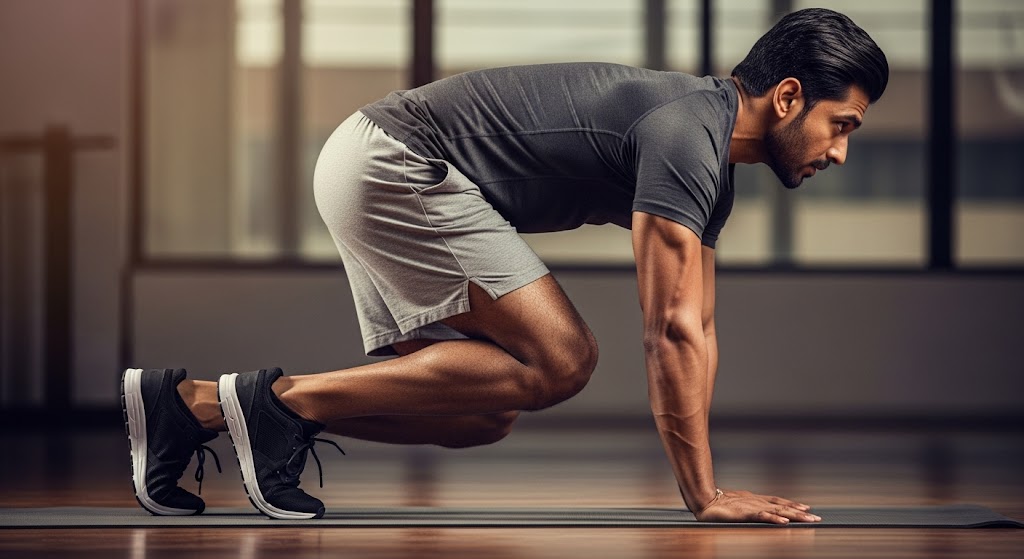
Key Muscles Engaged in Calisthenics Abs
Understanding core anatomy maximizes calisthenics abs training effectiveness by targeting specific muscle groups for comprehensive strength development. Effective core training engages multiple muscle layers working synergistically to create stability, power, and functional movement patterns essential for athletic performance and daily activities.
| Sr.No | Muscle Group | Primary Function | Training Focus |
| 1 | Rectus Abdominis | Spinal flexion, “six-pack” formation | Front-loaded movements |
| 2 | External Obliques | Rotation, lateral flexion | Twisting exercises |
| 3 | Internal Obliques | Deep rotation, core stability | Anti-rotation holds |
| 4 | Transverse Abdominis | Deep core stabilization | Breathing exercises |
| 5 | Erector Spinae | Spinal extension, posture | Back extension movements |
| 6 | Hip Flexors | Hip flexion, leg raises | Leg lifting exercises |
| 7 | Serratus Anterior | Shoulder stability, protraction | Plank variations |
| 8 | Diaphragm | Breathing, internal pressure | Controlled breathing |
Activate your glutes and hamstrings: how to do glute bridge for strength and posture
Understanding the Rectus Abdominis
The rectus abdominis is often referred to as the “six-pack” muscle due to its visible segments when developed. This muscle runs vertically along the front of the abdomen and is crucial for flexing the spine, especially during movements like sit-ups and leg raises.
The Role of Obliques in Core Stability
Obliques are located on the sides of the abdomen and play a vital role in rotational movements and lateral stability. Strengthening the obliques can enhance your performance in activities that require twisting motions, such as running or swimming.
Importance of the Transverse Abdominis
The transverse abdominis is the deepest layer of abdominal muscles. It acts as a natural corset, providing structural support to the core and stabilizing the spine during physical activity. Strengthening this muscle is essential for improving overall core stability.
Explore the real impact in does reformer Pilates burn calories and see how it stacks up as a fat-burning workout.
Does Calisthenics Train Core?
Absolutely! Calisthenics is one of the most effective training modalities for developing core strength. Unlike isolated machine exercises, calisthenics movements require full-body integration, with your core serving as the power center. Many fundamental calisthenics exercises—like push-ups, pull-ups, and dips—engage the core as stabilizers even when they’re not specifically targeting the abdominal muscles. Advanced movements such as the human flag, front lever, and planche demand extraordinary core strength and control. The beauty of bodyweight training is that it forces your core to work in functional patterns that translate directly to real-world strength and athletic performance. This integrated approach is why many gymnasts and calisthenics athletes develop impressive core definition without ever doing traditional “abs exercises.”
Try this effective Chest and Tricep Workout with Dumbbells for serious strength and definition.
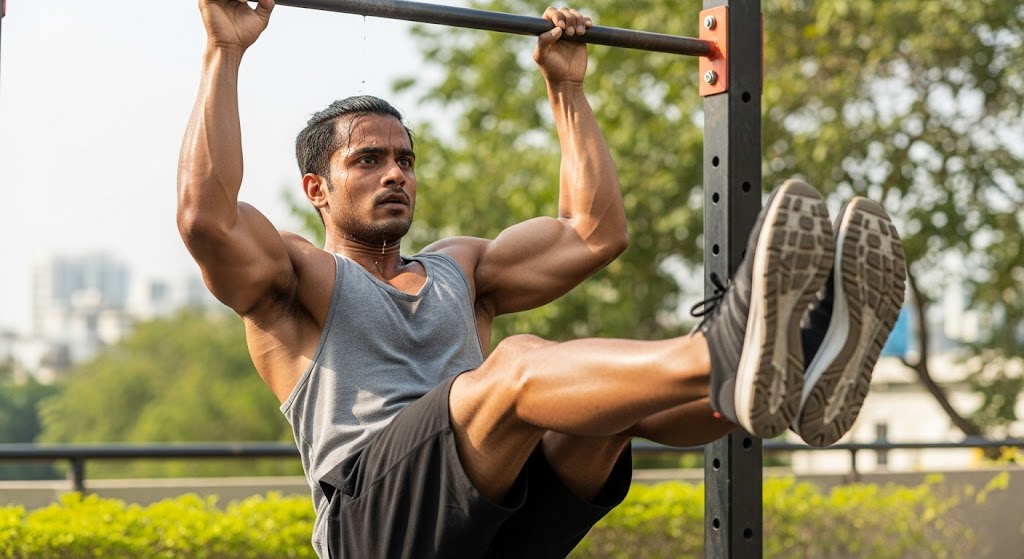
Designing Your Calisthenics Abs Workout
Creating effective calisthenics abs routines requires strategic exercise selection, progressive overload, and proper recovery planning. Successful core training balances intensity with frequency, incorporates movement variety, and progressively challenges stability to build functional strength that translates into improved athletic performance and injury prevention.
Beginner-Level Calisthenics Abs Workout Exercises
Perfect starting point for core development. These foundational exercises build basic stability and strength while teaching proper form and breathing patterns. Focus on quality over quantity, maintaining control throughout each movement to establish solid technique before progressing to more challenging variations and longer durations.
| Exercise | Duration/Reps | Focus Area |
| Elbow Plank | 15-60 seconds | Full core |
| Table Pose | 3-5 seconds each | Core stability |
| Heel Taps | 15-20 per side | Obliques |
| Mountain Climbers | 30 seconds | Dynamic core |
| Lying Leg Raises | 8-12 reps | Lower abs |
1. Elbow Plank
The elbow plank is a fundamental core-strengthening exercise that builds stability and endurance throughout your entire midsection. This static hold targets deep abdominal muscles while improving posture and spinal alignment. Perfect for beginners, it establishes proper core engagement patterns essential for advanced movements. Start with short holds and gradually increase duration.
2. Table Pose
Table pose develops core stability while enhancing coordination and balance through controlled limb movements. This foundational exercise strengthens your entire trunk while teaching proper neutral spine positioning. The alternating arm and leg extensions challenge your core’s ability to maintain stability during dynamic movement, making it excellent preparation for more advanced exercises.
3. Heel Taps
Heel taps are an excellent beginner exercise for developing oblique strength and core coordination. This gentle lateral movement targets the sides of your core while maintaining a stable base. The controlled reaching motion teaches proper core engagement without strain, making it perfect for those new to abdominal training while building foundational strength.
4. Mountain Climbers
Mountain climbers combine cardiovascular conditioning with dynamic core strengthening in one powerful movement. This exercise builds explosive core power while improving coordination and endurance. The alternating leg drives challenge your abs to maintain stability while your lower body moves rapidly, creating an effective full-body workout that burns calories and strengthens muscles.
5. Lying Leg Raises
Lying leg raises specifically target the often-neglected lower abdominal muscles through controlled lifting and lowering movements. This exercise builds strength in the hip flexors and deep core muscles while teaching proper pelvic control. The slow, controlled motion maximizes muscle engagement and develops the strength foundation needed for advanced hanging exercises.
Find out exactly How Many Jumping Jacks to Burn 500 Calories and how to make each rep count.

Intermediate-Level Calisthenics Abs Workout Exercises
Level up your core training with these intermediate calisthenics abs workout exercises designed to build strength, control, and endurance. These workouts focus on engaging your entire abdominal region through dynamic and static movements, helping you master core stability and sculpt your abs effectively. Incorporate these moves regularly to progress toward advanced calisthenics abs workout goals.
| Exercise | Duration/Reps | Focus Area |
| Hollow Body Hold | 10-30 seconds | Total core |
| Hollow Body Crunch | 10-12 reps | Upper abs |
| Reverse Crunch | 12-15 reps | Lower abs |
| Side Plank | 30 seconds each | Obliques |
| Russian Twist | 12-15 per side | Rotational core |
| Flutter Kicks | 30 seconds | Lower abs |
1. Hollow Body Hold
The hollow body hold is a gymnastics-inspired exercise that develops total core integration and strength. This challenging static position teaches your body to maintain proper alignment while creating full-body tension. It’s essential for building the core strength needed for advanced movements like handstands and muscle-ups, making it a cornerstone exercise.
2. Hollow Body Crunch
Hollow body crunches advance traditional crunching by maintaining the challenging hollow position throughout the movement. This dynamic exercise targets upper abdominals while reinforcing proper core positioning. The combination of static hold and dynamic movement creates intense muscle engagement, building both strength and endurance in your core while improving movement quality.
3. Reverse Crunch
Reverse crunches specifically target lower abdominal muscles through controlled hip flexion and spinal curling. This exercise teaches proper posterior pelvic tilt while strengthening the often-weak lower abs. The rolling motion engages deep core stabilizers and helps develop the strength foundation needed for advanced exercises like hanging leg raises.
4. Side Plank
Side planks are essential for developing lateral core strength and stability, particularly targeting the obliques and deep stabilizing muscles. This exercise corrects muscular imbalances while building the side-body strength crucial for rotational power and spinal health. The unilateral nature challenges your core in a completely different plane of movement.
5. Russian Twist
Russian twists develop rotational core strength through controlled twisting movements while maintaining an isometric hold. This exercise targets the obliques and deep core muscles while improving spinal mobility and rotational power. The combination of balance challenge and rotational movement makes it excellent for athletes and anyone seeking functional core strength.
6. Flutter Kicks
Flutter kicks are a dynamic lower abdominal exercise that builds endurance while targeting hip flexors and deep core muscles. This rapid alternating movement challenges your core’s ability to maintain stability under fatigue. The continuous motion builds muscular endurance while strengthening the lower abs, making it excellent for building both strength and conditioning.
Try these powerful Calisthenics Leg Exercises to build strength, balance, and endurance using just your bodyweight.
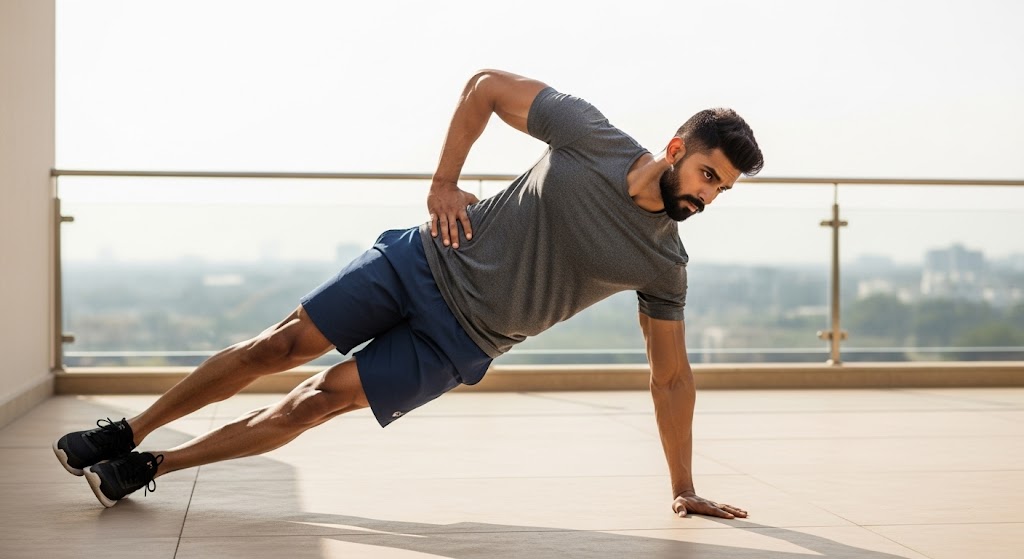
Advanced Calisthenics Abs Workout Movements
Push your limits with these advanced calisthenics abs workout movements that challenge your core strength, balance, and muscle control. Perfect for those ready to take their abdominal training to the next level, these exercises demand precision and endurance for maximum results.
| Exercise | Duration/Reps | Focus Area |
| Hanging Leg Raises | 8-10 reps | Lower abs, grip |
| Toes to Bar | 5-8 reps | Full core, coordination |
| Dragon Flags | 3-5 reps | Extreme core control |
| L-Sit Holds | 5-10 seconds | Static strength |
| Superman Hold | 20-30 seconds | Posterior chain |
| Windshield Wipers | 6-8 per side | Obliques, grip |
| Plank Knee to Elbow | 10-12 per side | Dynamic stability |
1. Hanging Leg Raises
Hanging leg raises represent the ultimate progression of lower abdominal training, combining core strength with grip endurance. This challenging exercise targets deep hip flexors and lower abs while building functional pulling strength. The hanging position eliminates momentum while requiring total core integration, making it a true test of abdominal power and control.
2. Toes to Bar
Toes to bar is an advanced dynamic movement requiring exceptional core strength, flexibility, and coordination. This exercise develops full-body integration while building explosive core power. The movement demands perfect timing and control as you coordinate grip strength, core engagement, and hip mobility to touch your toes to the bar with precision.
3. Dragon Flags
Dragon flags are the ultimate test of core control, requiring extreme strength and body awareness to perform correctly. This exercise builds incredible core integration while developing the strength needed for advanced calisthenics movements. The full-body tension required makes it one of the most challenging abdominal exercises, demanding perfect form and exceptional core strength.
4. L-Sit Holds
L-sit holds combine core strength with shoulder stability and hip flexibility in one demanding static position. This advanced exercise builds the strength foundation for gymnastics movements while developing incredible core endurance. The position requires total body integration and teaches the core engagement patterns essential for advanced calisthenics skills like handstand holds.
5. Superman Hold
Superman holds target the posterior chain muscles that balance and support strong abdominal development. This exercise strengthens the entire back body while improving posture and spinal health. The isometric hold develops endurance in the often-neglected back muscles, creating a balanced approach to core training that prevents imbalances and promotes overall strength.
6. Windshield Wipers
Windshield wipers are an advanced rotational exercise that challenges oblique strength while hanging from a bar. This dynamic movement requires exceptional grip strength and core control while developing rotational power. The side-to-side motion targets deep stabilizing muscles and builds the kind of core strength needed for advanced gymnastics and calisthenics movements.
7. Plank with Knee to Elbow
Plank with knee to elbow combines static core strength with dynamic movement, creating a challenging full-body exercise. This movement targets obliques while maintaining plank position stability. The cross-body motion develops rotational strength and coordination while building the kind of integrated core strength needed for athletic performance and advanced movement patterns.
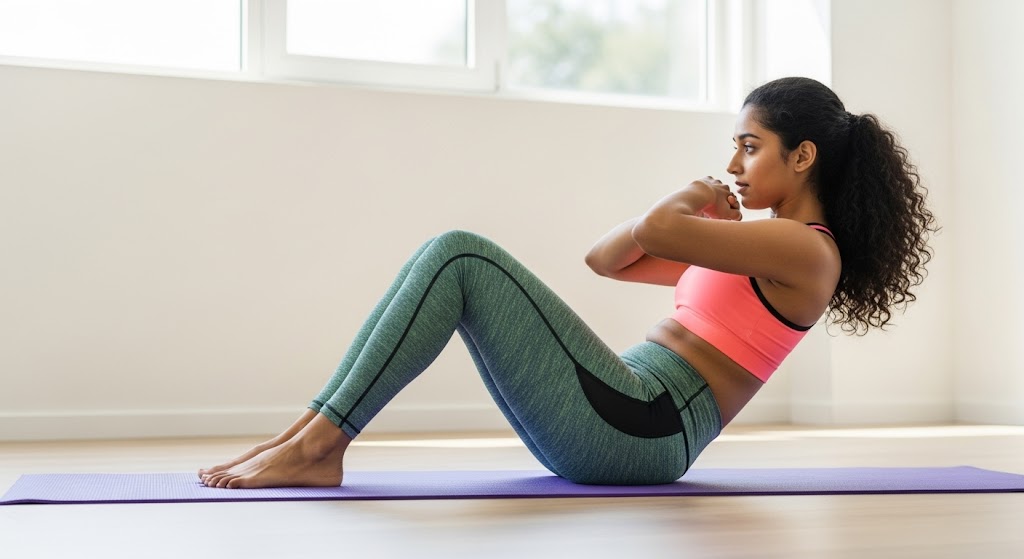
These Arm Workouts with Dumbbells for Women are perfect for strength, tone, and confidence at any level.
Structuring Your Workout Routine
Effective abs training requires strategic planning and progressive overload. Combine exercises from different levels, allow adequate rest between sessions, and focus on consistent practice rather than intensity. Structure workouts with proper warm-up, target different muscle groups, and gradually increase difficulty as strength improves for optimal results.
1. Warm-Up Essentials
Proper warm-up preparation activates your nervous system and increases blood flow to working muscles, reducing injury risk during intense core training. A thorough warm-up elevates core temperature, improves joint mobility, and mentally prepares you for challenging exercises. This essential phase enhances performance while protecting your spine and abdominal muscles from strain.
- Dynamic Stretches for Core Activation: Dynamic stretches like torso twists, arm circles, and hip rotations actively engage your core muscles while improving range of motion. These flowing movements prepare your abdominal muscles for the demands ahead while activating stabilizing muscles throughout your trunk. Dynamic stretching creates neuromuscular readiness, ensuring optimal muscle firing patterns during your workout.
- Light Cardio to Elevate Heart Rate: Five to ten minutes of light cardiovascular activity such as jogging in place, jumping jacks, or high knees gradually elevates your heart rate and core temperature. This gentle cardio phase increases oxygen delivery to working muscles while activating your cardiovascular system. Proper heart rate elevation optimizes performance and prepares your body for intense training.bs exercises.
2. Crafting the Main Calisthenics Abs Workout
Your main workout should strategically combine exercises targeting different core muscle groups while respecting your current fitness level. Structure your session with progressive difficulty, alternating between static holds and dynamic movements. This balanced approach ensures comprehensive core development while preventing overuse injuries and maintaining proper form throughout your training session.
- Timing: Work Intervals and Rest Periods: Structure your workout with 30-60 second work intervals followed by 15-30 second rest periods between exercises. Beginners should use longer rest periods to maintain proper form, while advanced trainees can reduce rest for increased intensity. This timing allows adequate recovery while maintaining training stimulus, optimizing both strength gains and muscular endurance development.
- Selecting Exercises Based on Fitness Level: Choose exercises that challenge you without compromising form or safety. Beginners should master basic planks and heel taps before progressing. Intermediate trainees can incorporate hollow holds and side planks. Advanced practitioners can attempt hanging leg raises and dragon flags. Progressive overload through exercise selection ensures continuous improvement and prevents plateaus.
3. Cooling Down
Cooling down facilitates the transition from high-intensity exercise to rest while promoting recovery and reducing muscle soreness. This phase gradually lowers heart rate, prevents blood pooling, and initiates the recovery process. Proper cooling down enhances flexibility, reduces metabolic waste accumulation, and prepares your body for optimal adaptation to training stress.
- Focusing on the Abdominal Area and Lower Back: Prioritize stretches for your abdominal muscles and lower back, as these areas work intensively during core training. Cat-cow stretches, child’s pose, and gentle spinal twists help decompress the spine and restore natural curves. Targeted stretching of worked muscles prevents tightness, reduces injury risk, and promotes balanced muscular development throughout your core.
- Static Stretches for Recovery: Static stretching during cool-down helps restore muscle length and promotes relaxation after intense core training. Hold stretches for 20-30 seconds targeting tight areas developed during your workout. This passive stretching reduces muscle tension, improves flexibility, and activates the parasympathetic nervous system to enhance recovery and reduce post-exercise stiffness.
Try this proven Arm Workout at Home with Dumbbells – simple, effective, and beginner-friendly.
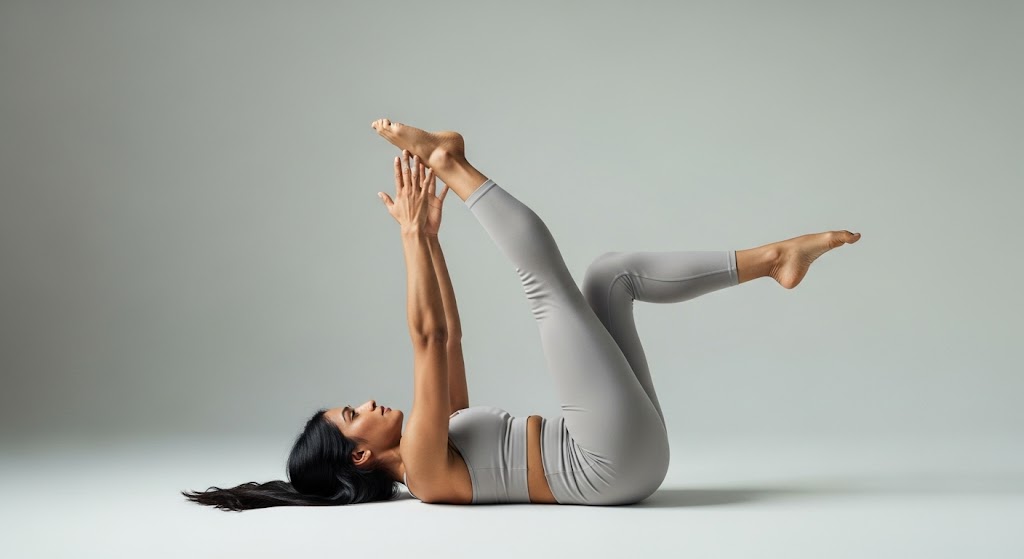
Can You Get Abs From Calisthenics?
Yes, you absolutely can develop visible abdominal muscles through consistent calisthenics training. The key lies in understanding that abs are built in two complementary ways: by strengthening the muscles through resistance training and by reducing body fat to make those muscles visible. Bodyweight core exercises are exceptionally effective at building the muscle definition and strength in your abdominal wall. Movements like hanging leg raises, L-sits, and dragon flags create significant tension in the abdominal muscles, promoting growth and definition. However, nutrition plays an equally important role—the saying “abs are made in the kitchen” holds true. Even the most rigorous abs conditioning routine won’t reveal a six-pack if it’s covered by a layer of body fat. Combining consistent calisthenics training with proper nutrition creates the perfect formula for developing visible abs.
Discover all the Jumping Jacks Exercise Benefits and why it’s a must-add to your routine.
Common Mistakes in Calisthenics Abs Workout
Avoiding common training errors accelerates progress and prevents injury. Many practitioners rush through movements, neglect proper form, or skip progressive steps. Understanding these frequent mistakes helps you maintain correct technique, choose appropriate difficulty levels, and develop sustainable training habits that lead to long-term success.
- Ensuring Proper Form to Avoid Injury: Always prioritize form over quantity while doing any calisthenics abs exercises. Poor form can lead to injuries and diminish the effectiveness of your workouts.
- The Importance of Recovery Time: Allow your muscles to recover between workouts. Overtraining can lead to fatigue and hinder progress. Aim for 2-3 abs workouts per week.
- Understanding the Risks of Overtraining: Recognize the signs of overtraining, such as persistent fatigue or diminished performance, and adjust your training accordingly.
Explore these effective Bodyweight Exercises for Beginners to build strength and confidence from day one.
Do 10-Minute Abs Workouts Work?
Short, focused abs training sessions can indeed be effective when executed properly. The primary advantage of 10-minute workouts is their accessibility—they’re easier to fit into busy schedules and more sustainable for daily practice. The effectiveness depends largely on intensity and exercise selection. High-intensity interval training (HIIT) principles applied to core conditioning can deliver significant results in short timeframes. For beginners, consistent 10-minute sessions can build foundational strength and endurance. Intermediate and advanced practitioners may find these brief workouts useful as supplements to longer training sessions, or for active recovery days. The key is maximizing time under tension and minimizing rest periods. While longer sessions allow for more volume and variety, consistent 10-minute daily routines can yield impressive results over time, especially when combined with proper nutrition and overall fitness programming.
Get big results with these effective Bodybuilding Exercises at Home using just your bodyweight or minimal equipment.
Tips for Maximizing Your Results for Calisthenics Abs Exercises
Success in calisthenics abs training depends on consistency, proper form, and smart progression. Focus on mind-muscle connection, maintain proper breathing patterns, and prioritize quality over quantity. Combine static holds with dynamic movements, ensure adequate recovery time, and track your progress systematically for continuous improvement.
- Gradually Increasing Workout Intensity: As you progress, gradually increase the intensity of your workouts by adding variations or increasing duration.
- Incorporating Static Holds for Balance: Integrate static holds, like planks, into your routine for a balanced approach to core strength.
- Enhancing Core Engagement Through Breathing Techniques: Focus on your breathing during exercises to enhance core engagement. Exhale during exertion and inhale during recovery phases.
Find out the truth in Does Calisthenics Increase Height and what science says about it.

5 Best Core Exercises for Calisthenics
These five fundamental movements provide comprehensive core development for all fitness levels. Each exercise targets multiple muscle groups while building functional strength and stability. Master these essential movements first before advancing to complex variations. They form the foundation of any effective calisthenics abs program.
- Hollow Body Hold – The foundation of gymnastics core training, this exercise teaches total-body tension and proper positioning for advanced skills. It simultaneously strengthens all layers of the abdominal wall while teaching proper posterior pelvic tilt.
- L-Sit – This isometric hold builds tremendous strength in the lower abdominals and hip flexors while improving shoulder stability. It’s scalable from beginner to advanced and translates directly to many calisthenics skills.
- Dragon Flag – Popularized by Bruce Lee, this advanced movement builds exceptional core control and teaches full-body rigidity. Few exercises challenge the entire abdominal wall with the same intensity.
- Hanging Leg Raises – These target the lower abs with increased intensity due to the extended lever arm and unstable hanging position. They build functional strength that translates to many calisthenics movements.
- Plank Variations – From standard planks to side planks and dynamic versions, these build essential core stability and endurance. The ability to maintain a rigid torso is fundamental to all advanced calisthenics skills.
These exercises provide a comprehensive approach to core development, challenging your abdominals from multiple angles while building functional strength patterns.
Learn proper form and technique in How to Do Jumping Jacks to maximize your results and avoid injury.
Best At-Home Calisthenics Abs Exercises
Train your core effectively anywhere with these equipment-free exercises. Perfect for busy schedules or limited space, these movements require only bodyweight and minimal floor space. Create an effective home workout routine that builds strength, improves posture, and develops impressive abdominal definition without gym equipment.
- Mountain Climbers – These dynamic movements elevate your heart rate while engaging your core, making them perfect for home workouts.
- Bicycle Crunches – This exercise effectively targets both the rectus abdominis and obliques with a twisting motion that builds rotational strength.
- Hollow Body Rocks – A progression from the hold, these dynamic movements intensify core engagement while requiring no equipment.
- Flutter Kicks – These simple yet challenging movements target the lower abdominals and can be performed anywhere with enough floor space.
- Russian Twists – Perfect for home settings, this seated exercise develops rotational core strength and oblique definition.
These exercises require nothing more than your body weight and enough space to lie down, making them ideal for home training environments.
Check out these effective Resistance Band Exercises for Abs and take your abs training to the next level.
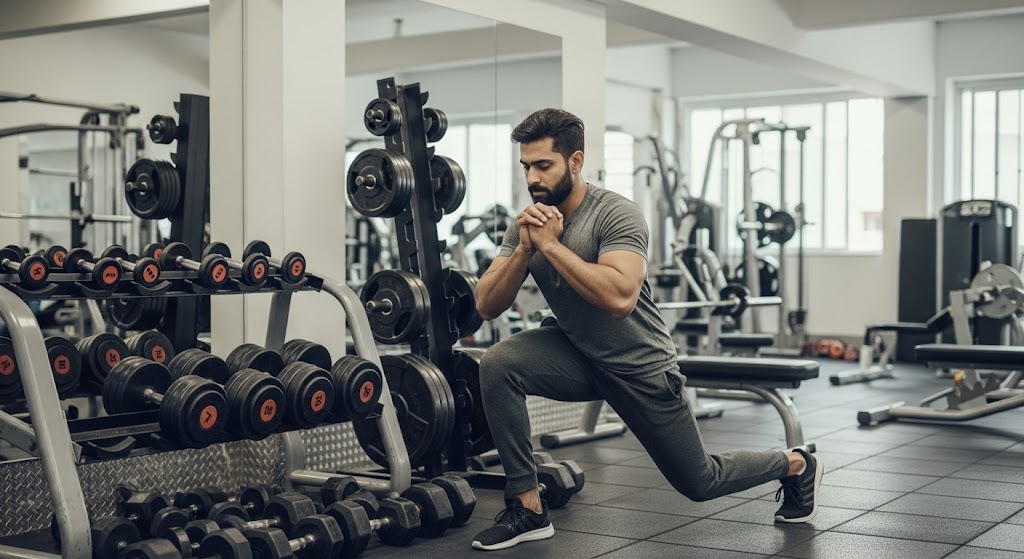
Sample Calisthenics Abs Workout Routines
Explore effective calisthenics abs workout routines designed to build core strength, improve stability, and enhance overall fitness. These sample workouts offer a balanced mix of exercises suitable for various skill levels to help you stay consistent and motivated.
Beginner Routine Breakdown
A structured routine for beginners includes:
- 15 Sit-ups (Butterfly style)
- 15 Plank with Knee to Elbow (each side)
- 30 seconds Flutter Kicks
- Max Plank Hold
- Max Side Plank Hold (each side)
Intermediate Routine Example
An intermediate routine might consist of:
- 5 Inch Worms
- 20 Plank with Knee to Elbow (each side)
- 30 seconds Sitting Jack Knifes
- Max Hollow Hold
- Max Side Plank Hold (each side)
Advanced Routine to Test Your Limits
For advanced practitioners:
- 10 Toes to Bar
- 45 seconds Hollow Rocks
- 10 Windshield Wipers
- Max L-sit Hold
- 7 Dragon Flags
Learn proper form and technique in How to Do Plank Exercise and get the most out of every second.
Conclusion
Calisthenics Abs Workout stands out as an exceptional approach to building a strong and functional core. Incorporating calisthenics into your routine not only sculpts your abs but also enhances overall functional fitness. The dynamic nature of these workouts keeps you engaged, allowing for continuous progression and adaptation to your fitness level. As you develop your core strength through different bodyweight abdominal exercises, you’ll notice benefits that extend beyond the gym—improving your performance in sports and everyday activities while reducing the risk of injury.
Start your home workouts with calisthenics at home – no equipment needed and build real strength using just your bodyweight.
Ready to take your core strength to the next level? Join us at ISC – Indian School Of Calisthenics, located at SRPF Ground, NH8, Goregaon (E), Mumbai – 400065. Experience expertly guided calisthenics abs workouts tailored to your fitness journey. For details or to book a session, call +91 77159 53218. Visit indianschoolofcalisthenics.com and start transforming your core today!
Calisthenics Abs Workout – FAQs
How often should I do calisthenics abs workouts?
It’s recommended to train your abs 2-3 times per week to allow for recovery and muscle growth.
Can I do calisthenics abs workouts at home?
Absolutely! Calisthenics abs workouts require no equipment and can be performed in the comfort of your home.
Are calisthenics abs effective for weight loss?
While calisthenics ab workouts can contribute to weight loss, they should be combined with a balanced diet and overall fitness regimen for optimal results.
How do I know if I’m doing the exercises correctly?
Focus on form over quantity. Consider recording yourself or working with a fitness professional to ensure proper technique.
Can beginners start with calisthenics abs workouts?
Yes, calisthenics abs workouts are suitable for beginners. Start with basic exercises and gradually increase intensity as you build strength.
Do I need equipment for a calisthenics abs workout?
No equipment is required for most calisthenics abs workout routines. Exercises like hollow holds, flutter kicks, and side planks rely on bodyweight and floor space, making them ideal for home or outdoor training.
What should I eat before and after a calisthenics abs workout?
Before your workout, opt for a light meal with carbs and protein to fuel your session. After the calisthenics abs workout, consume protein and healthy carbs to aid in muscle recovery and growth.
How long should a calisthenics abs workout last?
A focused calisthenics abs workout can last anywhere between 15 to 30 minutes, depending on your fitness level and whether you’re combining it with other training.
Can I combine a calisthenics abs workout with cardio or strength training?
Absolutely. A calisthenics abs workout complements both cardio and strength routines. It’s often placed at the end of a full-body session or alternated with upper/lower body days.
Will calisthenics abs workouts give me six-pack abs?
Calisthenics abs workouts can significantly strengthen and define your core, but visible abs also depend on overall body fat percentage. Combining consistent workouts with proper nutrition is key.

